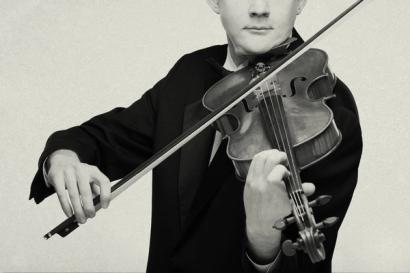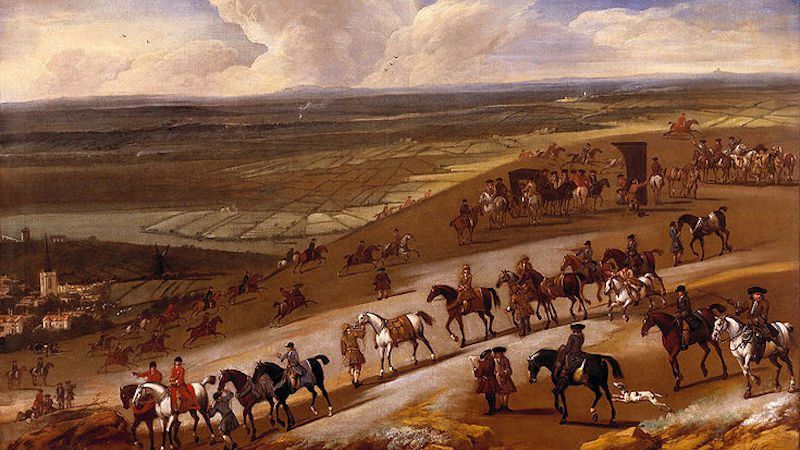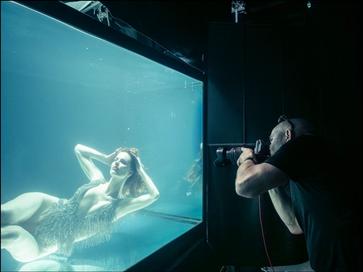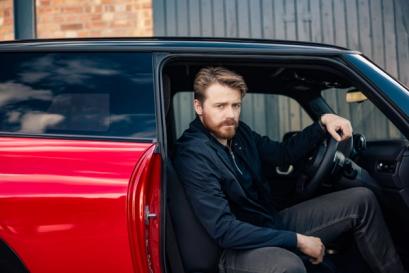

350 years of the most elegant racecourse in Britain
- Words: Hamish Roy
Today, horse racing is the second largest spectator sport in Britain. First introduced by the conquering Romans, it had gained a considerable following among the country’s elite by the 10th century, making it one of the nation’s oldest sports. Newmarket, celebrating its 350th anniversary this year, has played a key role in the formation of that sport; many of the pivotal events that would enshrine it in our national identity have taken place there. To celebrate this historic anniversary, we take a look at the history of Newmarket racecourse.
A tale of two Kings, and their discovery of a small Suffolk town.
1605
Whilst out hunting, James I comes across the village of Newmarket in Suffolk. Quickly developing an affinity for the place, he begins spending a considerable amount of his time there, racing horses – so much time, in fact, that parliament issued a bill beseeching him to focus more on running the country. Newmarket gains its name as ‘the home of horse racing’, a moniker it holds to this day.
1622
The first authenticated race takes place at Newmarket (early races had been run without any official record). The animals involved were owned by Lord Salisbury and the Marquis of Buckingham, and were raced for the mammoth prize of 100 guineas.
1654
Horse racing is banned by the Lord Protector Oliver Cromwell, with many horses being requisitioned by the state. In true dictatorial style, Cromwell reportedly retains a stud running of his own.
1666
Charles II reverses Cromwell’s decree, having been restored to the throne 6 years earlier. Returning to his beloved Newmarket, Charles establishes the Town Plate, a race to be run on the second Thursday of October every year. Charles II arguably does more to popularise the sport than any other, endowing it with a highly fashionable reputation as the ‘Sport of Kings. Horse racing becomes a major pastime of the British elite; Charles would move his entire court from London to Newmarket for certain races, where they would stay for weeks at a time.
1671
Charles II competes in a race at Newmarket, which he wins.
1752
The Jockey Club takes a lease on a coffee shop in the Newmarket’s high street. This would become the Jockey Club Rooms that we know today.
1786
The Inauguration of the July Stakes, which is now the oldest race in existence for juvenile horses.
1809 & 1814
1809 saw the inauguration of the 2000 Guineas, which took its name from the size of the prize on offer. The 1000 Guineas, a race for fillies, was established 5 years later, in 1814. These races would go on to become two of the five British Classics.
1848
The first train line to Newmarket is established. Rumour has it that Newmarket received priority for its line because MPs and the nobility wanted to be able to visit Newmarket and still make it back to London before the day was out.
1894
The Princess of Wales stakes, named in honour of Alexandra, Princess of Wales, is run for the first time.
1914
At the outbreak of World War I, Newmarket becomes an official Royal Flying Corps (later the RAF) base. Racing continues nevertheless.
1925
The Newmarket Town Plate is won by a lady rider for the first time.
1939
The Rowley Mile becomes an official bomber command airbase, with the grandstands serving as a temporary home for the aircrew.
1949
The photo finish, in use elsewhere since 1947, is used at Newmarket for the first time in order to determine the outcome of the 2000 Guineas.
1974
Newmarket racecourse become part of Jockey Club Recourses, also known as the Racecourse Holdings Trust.
1987
Newmarket Nights established, hailing the beginning of the after-racing features that are now a regular fixture across the country.
2000
The millennium Grandstand is opened, replacing its Victorian predecessor. The £19,000,000 stand was opened by Her Majesty Queen Elizabeth II, who was greeted by a ‘Guard of Honour’ made of 7 jockeys who had won the 2000 Guineas at least once in their career. A free-fall display was given by the RAF Falcon’s team; a Hercules aircraft gave a fly past.
2006 & 2007
The July course undergoes a £10,000,000 redevelopment.
2009
The 200th 2000 Guineas race is run.
2014
The 200th 1000 Guineas race is run.
2016
The opening of the National Heritage Centre for Horse Racing and Sporting Art, the most significant contribution to the town and local economy for the last decade. Newmarket celebrates its 350th Anniversary.
For more information and tickets to this season’s events, visit newmarket.thejockeyclub.co.uk


